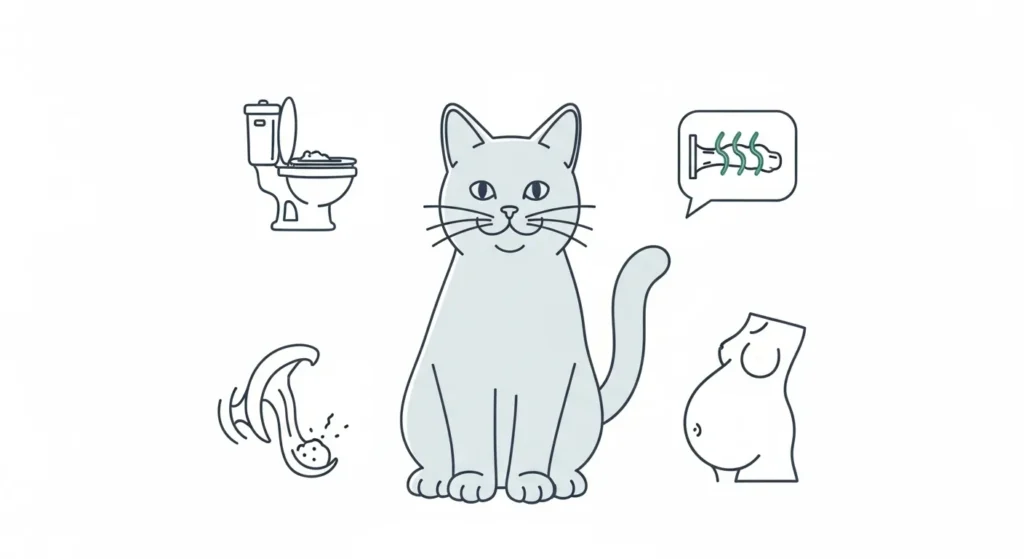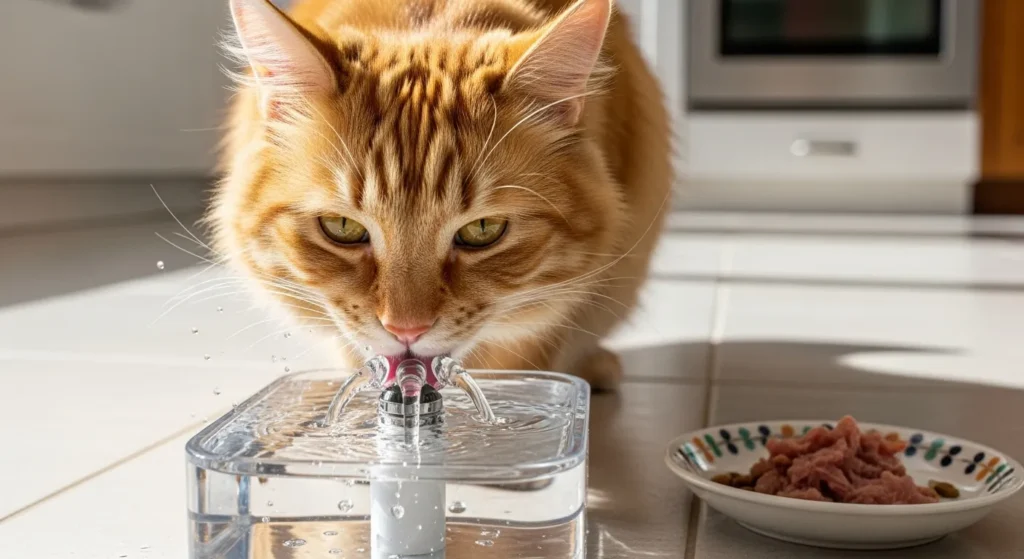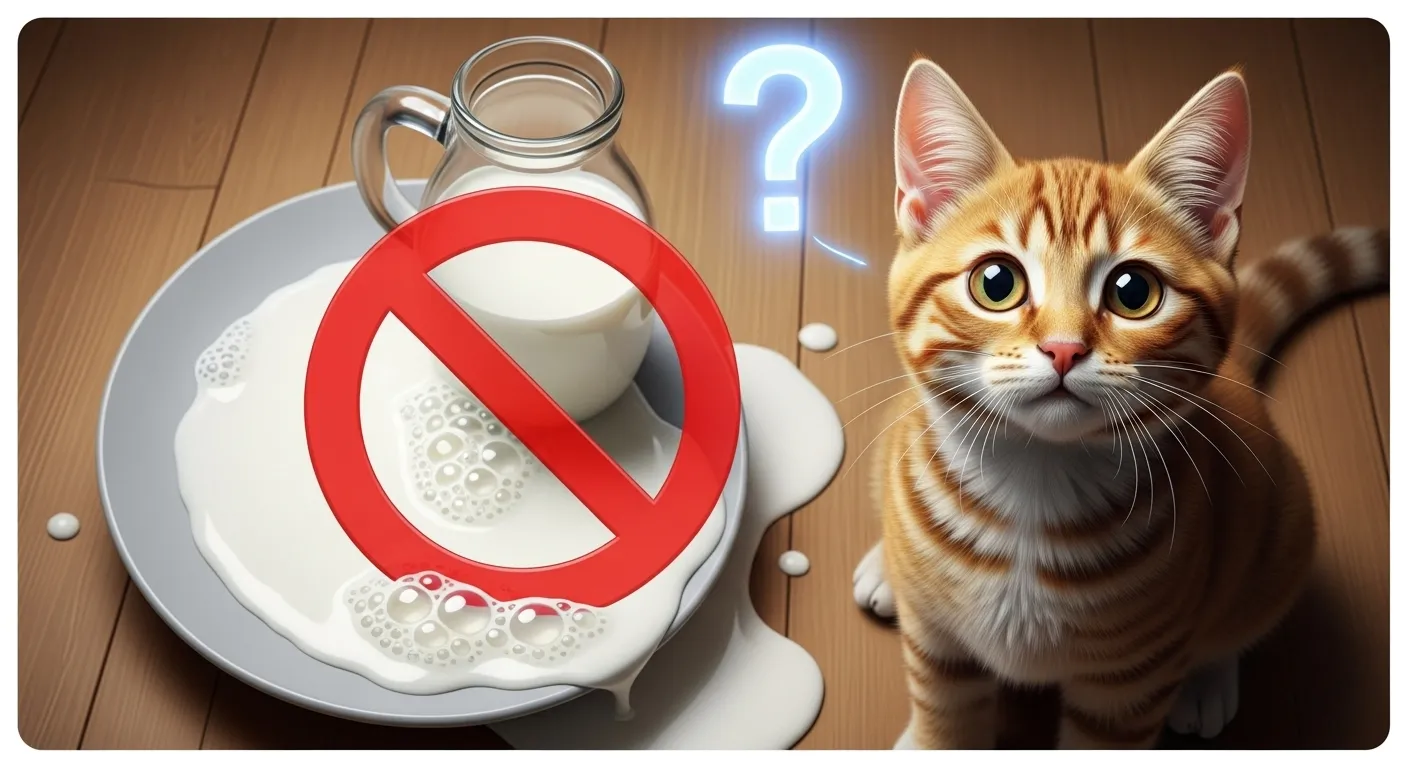Many cat owners picture their pet lapping up a saucer of milk. But is this a good idea? The answer is usually no for adult cats. Most cats lose the ability to digest milk after they stop nursing as kittens. This leads to tummy troubles. In this guide, we break down the facts. We cover why milk causes problems, what to offer instead, and how to keep your cat healthy. If your cat shows odd symptoms after eating, try our pet symptom checker for quick advice.
Why Milk Is Not Safe for Most Adult Cats
Adult cats often can’t handle regular cow’s milk. They lack enough of the enzyme called lactase. This enzyme breaks down a sugar in milk known as lactose. Without it, lactose stays in the gut. Bacteria then feed on it. This pulls water into the intestines and creates gas.
What Is Lactose Intolerance in Cats?
Lactose intolerance happens when cats stop making lactase around 6 to 12 weeks old. Kittens need this enzyme to drink from mom. But after weaning, levels drop. By adulthood, about 70% of cats can’t digest dairy well. Cow’s milk has too much lactose for them. Even small sips can upset the balance.
You might wonder if all cats react the same. Not quite. A few keep some lactase. But vets say it’s rare. Better to skip milk than risk it.
Signs Your Cat Can’t Handle Milk
Watch for these issues within 12 hours of giving milk:
- Loose stools or diarrhea
- Vomiting
- Gas and bloating
- Belly pain, shown by hunching or hiding
These pass in a day for mild cases. But if your cat won’t drink water or acts tired, see a vet right away. Dehydration can set in fast. Use our pet symptom checker to spot patterns early.
Other risks include weight gain. Milk adds fat and calories. Your cat might skip meals and miss key nutrients like taurine. Over time, this harms the heart.

Can Kittens Drink Milk?
Kittens are different. They thrive on mother’s milk up to 8 weeks. It gives them antibodies and easy nutrition. If mom isn’t around, use kitten milk replacer. Brands like KMR work best. These match cat milk’s makeup.
Never give cow’s milk to kittens. It lacks the right proteins and can cause the same gut woes. Wean them to solid food by 4-6 weeks. Check our pet age calculator to track growth stages.
Safe Drinks and Treats for Cats Instead of Milk
Cats need water above all. Aim for fresh bowls daily. A cat fountain can make it fun. Wet cat food adds moisture too. About 70% of their water comes from food.
Cat-Friendly Milk Options
Look for lactose-free cat milk. These have low lactose or none. Add taurine for eye and heart health. Goat milk has less lactose and some good bacteria for the gut. Give just a teaspoon now and then.
Skip plant milks like almond or soy. They have extras like sugars or thickeners that bother cats. Oat milk might work in tiny bits, but water is safer.
For treats, try plain yogurt in small amounts if your cat tolerates dairy. But check first. See our post on can cats eat cheese for more on dairy.
Run new foods through our pet food safety checker to stay safe.
Tips to Boost Hydration
- Place multiple water stations around the house.
- Mix water into dry kibble.
- Offer low-sodium tuna in water as an occasional boost.
These steps help prevent urinary issues common in cats.

Why Do Cats Seem to Love Milk So Much?
Cats go crazy for milk’s smell and taste. The fat and proteins mimic meat. It’s like a quick reward. But this pull comes from kitten days. Adults chase the memory, not the need.
The old idea started in cartoons and farms. Cats hung around barns for mice and milk scraps. But science shows it’s not part of their wild diet.
If your cat begs, distract with catnip or a toy. Learn more in what does catnip do to cats.
Other Dairy Foods and When to See a Vet
Cheese or cream? Same rules apply. Small bits of hard cheese might pass for tolerant cats. But soft ones pack more lactose. Ice cream is a no—too much sugar and fat.
Test tolerance at home. Give a tiny drop and wait 24 hours. No issues? Try another day. But if diarrhea hits, stop and call the vet.
For broader eats, read what fruits can cats eat or use our pet compatibility checker for multi-pet homes.
If symptoms linger, it could signal allergies or bigger problems. Vets can run tests. Early care keeps your cat purring.
In short, skip the milk. Stick to water and cat food. Your feline will thank you with better health. Got a new kitten? Name it with our pet name generator.
For more cat care, check how long can cats go without water or why does my cat lick me.
